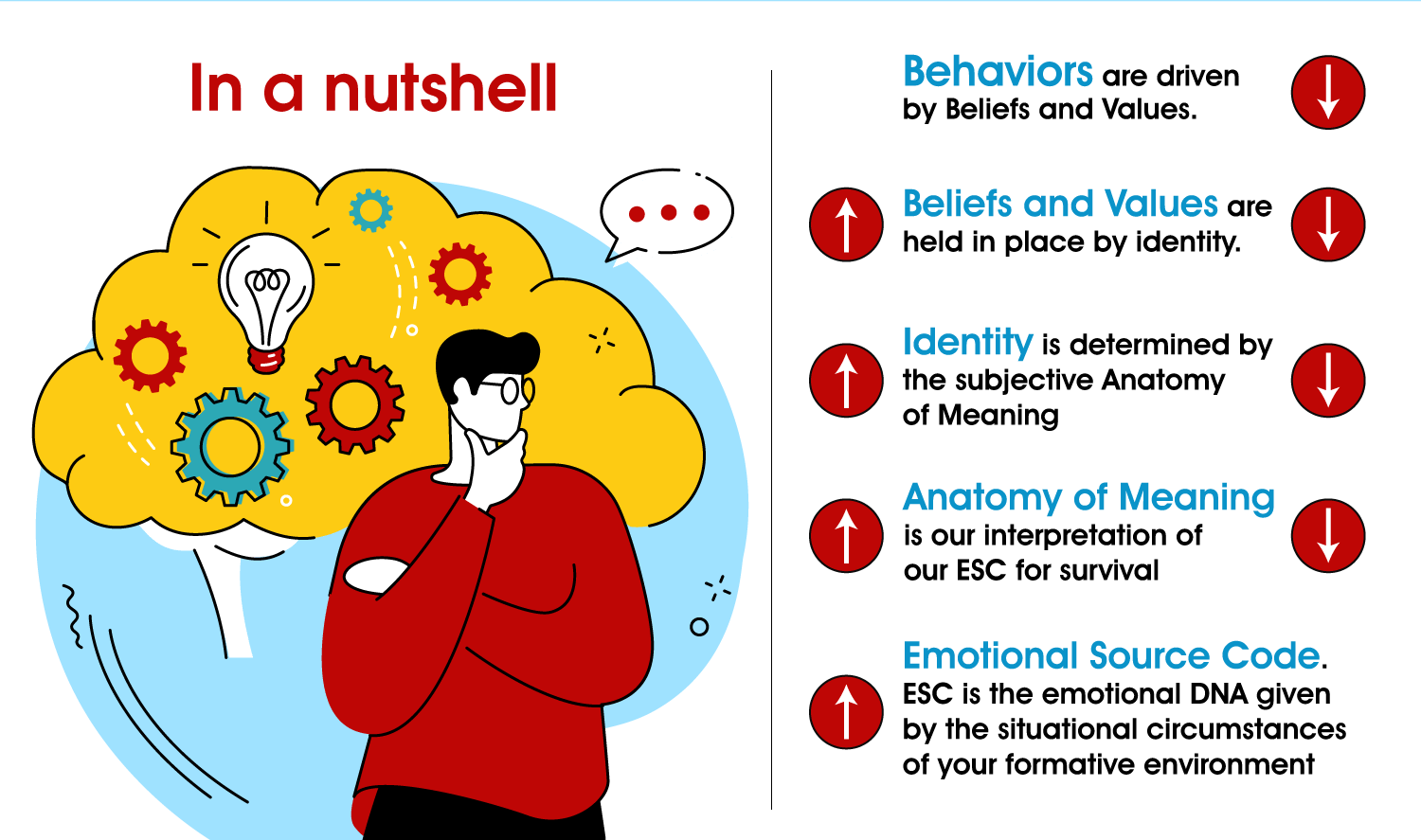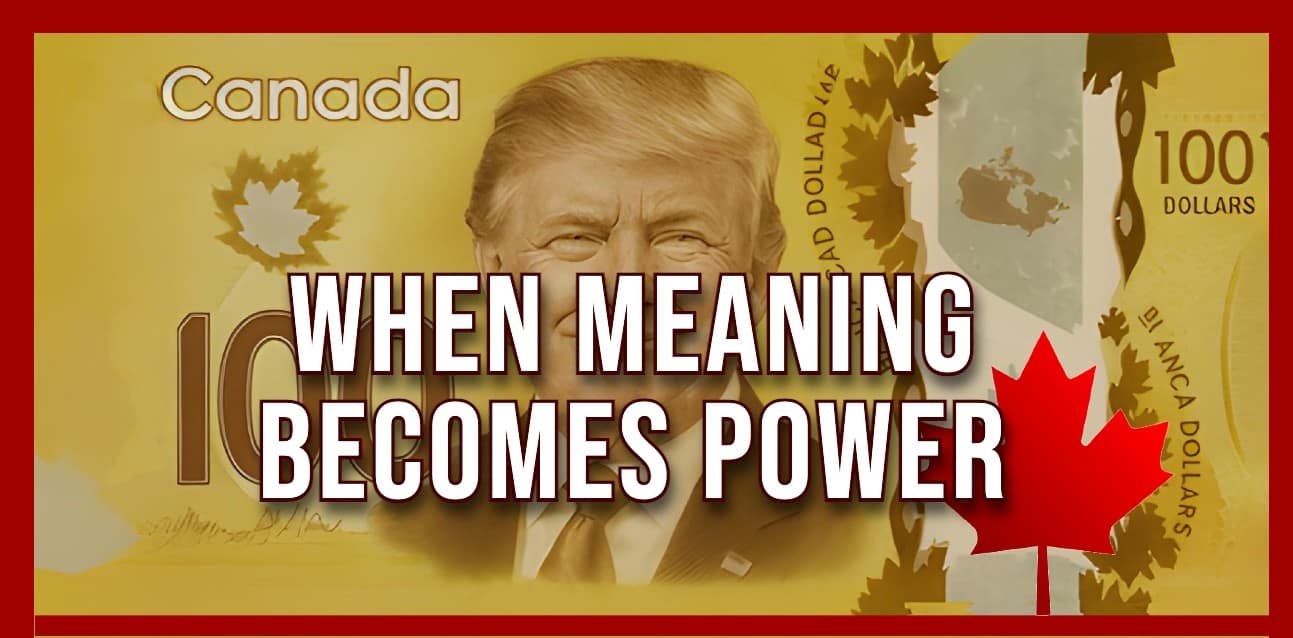Unlocking Your Emotional Source Code.
If you wear glasses, you’ve probably experienced looking everywhere for them only to realize they were on your head all along. This is much like how we search for our potential; 99% of people will never uncover the vast reservoir of potential they instinctively know exists within them.
When someone says, “I know I’m not fulfilling my potential, and I don’t know how to achieve it.” My response is simple: “How could you?” The true potential you seek doesn’t exist within the boundaries of your current identity.
Before you go on, just let that soak in.
Imagine this: Have you ever met someone for the first time and felt an inexplicable sense of distrust or unease? Even without knowing them, you couldn’t shake this feeling. This is your subconscious at work, your subjective anatomy of meaning.
Years ago, I was chatting with my friend Mark at the gym when I noticed his face suddenly change. He seemed threatened. I asked him what was going on. He pointed to a guy who had just walked in, a serious bodybuilder like everyone else in the gym. But Mark was ready to fight. “What’s going on? Do you know that guy?” I asked.
Mark’s reply was shocking but perfectly illustrates the unconscious mechanisms of our Emotional Source Code.
Without taking his eyes off the guy, he said, “I don’t know who he is, but I can tell he’s an a-hole.” This knee-jerk reaction, based solely on the man’s appearance, is a clear example of how our past experiences and biases shape our perceptions, often without us even realizing it.
You might find this story funny or judgmental, but it shows how humans truly operate. The “WOKE” idea of not being judgmental often makes us more so because we focus on the facade we want to project rather than examining the meaning we give to people, places, things, or situations.
Ordinarily, we might say that Mark has significant issues and needs therapy. But Mark was a successful CEO-founder, unlikely to sit on a therapist’s couch weekly.
Here’s how the Emotional Source Code process differs from traditional therapy. While therapy often focuses on past traumas and long-term healing, the Emotional Source Code process is more about understanding how those past, often unconscious, traumas become part of that limited box identity I spoke about at the article’s opening.
By discovering what parts of your genius got boxed away (disenfranchised), you can optimize your current emotional responses and tap into the potential only accessible outside the identity box. Working through the Emotional Source Code process, we follow a specific framework because, like you, most of my private clients don’t have the time or inclination for prolonged therapy sessions.
The Emotional Source Code is faster than traditional therapy. It swiftly moves you from the surface level of behaviors through five levels of awareness, quickly making you aware of what’s unconsciously driving you (often destructively) and how to use these elements to fulfill your life’s purpose.

Throughout the process, you gain many tools of awareness. For instance, consider Mark: an awareness tool might be asking ourselves what it is about a situation or person that makes us uncomfortable or confrontational.
Six Practical Steps to Explore Your Emotional Source Code
- Mindful Self-Reflection: Set aside time each day for specifically focused meditation or journaling. Raising self-awareness is essential, especially when dealing with disproportionate emotional responses. Consider a scenario where an emotionally healthy individual feels mildly irritated (a two- or three-level response) when their plans are unexpectedly changed. In contrast, someone lacking awareness might react with intense frustration and anger (a response level of 6 and higher). You can uncover underlying patterns and triggers from your Anatomy of Meaning (the subjective meaning you’re giving a situation) by reflecting on your thoughts, feelings, and reactions to such conditions. As a result, you can manage your emotions better and respond proportionately in the future.
- Seek Feedback: This one requires courage beyond that of the average person. However, those who want to operate optimally will converse openly with trusted friends or mentors. Ask for their honest observations about your behavior and reactions. This external perspective can provide valuable insights.
- Emotional Mapping: Create a map of your emotional responses. Identify common triggers and the disproportionate expression of emotions that result. Understanding these connections can help you recognize unconscious patterns.
- Spend Time With Your Little Self: This one can seem strange but powerful! Sit in a quiet place and use your imagination to travel back to meet up with the little/younger you. This exercise is not about interacting (even at an imaginary level). It’s about observing “little you” and allowing yourself to recognize what your little one is feeling that you may not have noticed or acknowledged.
- Professional Guidance: Consider working with a coach or therapist specializing in Emotional Source Code or similar methodologies. They can guide you through more profound layers of self-awareness and transformation.
- Nature and Solitude: Spend time in nature or in solitude. These moments of stillness can provide clarity and allow you to connect with your inner self, free from external distractions.
Throughout the process, you gain many tools of awareness. For instance, consider Mark: an awareness tool might be asking ourselves what it is about a situation or person that makes us uncomfortable or confrontational.
Here’s why people come to me. They want to be better leaders but have often read countless leadership books, had coaches, and attended guru trainings. They’ve had numerous “ah-ha” moments but still feel something is missing. These individuals know they’re here to make a big difference and have likely already done so. Yet, there’s an unmet inner need. They might feel guilty or ungrateful for wanting more despite being so “blessed.”
The problem isn’t that you want more in an accumulative sense; your desire for more is from a soulful fulfillment sense.
The Emotional Source Code process addresses this directly, showing how to meet this profound need. It transforms you from chasing external achievements to pursuing what brings true purpose and meaning. The process involves five levels, from behaviors to the deeper identity level, uncovering the Anatomy of Meaning formed in our formative years. This understanding can bring a sense of relief, knowing that there is a path to fulfillment.
Understanding your Emotional Source Code is not just about self-awareness; it’s about empowerment. It’s about taking control of your life and your reactions. Our identity isn’t just who we are; it’s driven by unconscious meanings attached to early experiences. Understanding this is key to unlocking your true potential and feeling confident in your decisions.
If you resonate with what you’ve just read and sensed something essential is missing in your life, there is hope and a path. Reach out to me at dov@dovbaron.com. Let’s discuss how I can help you crack open the lockbox of your Emotional Source Code and find the fulfillment you know is missing. There is a path to growth and fulfillment, and I’m here to guide you on that journey.




